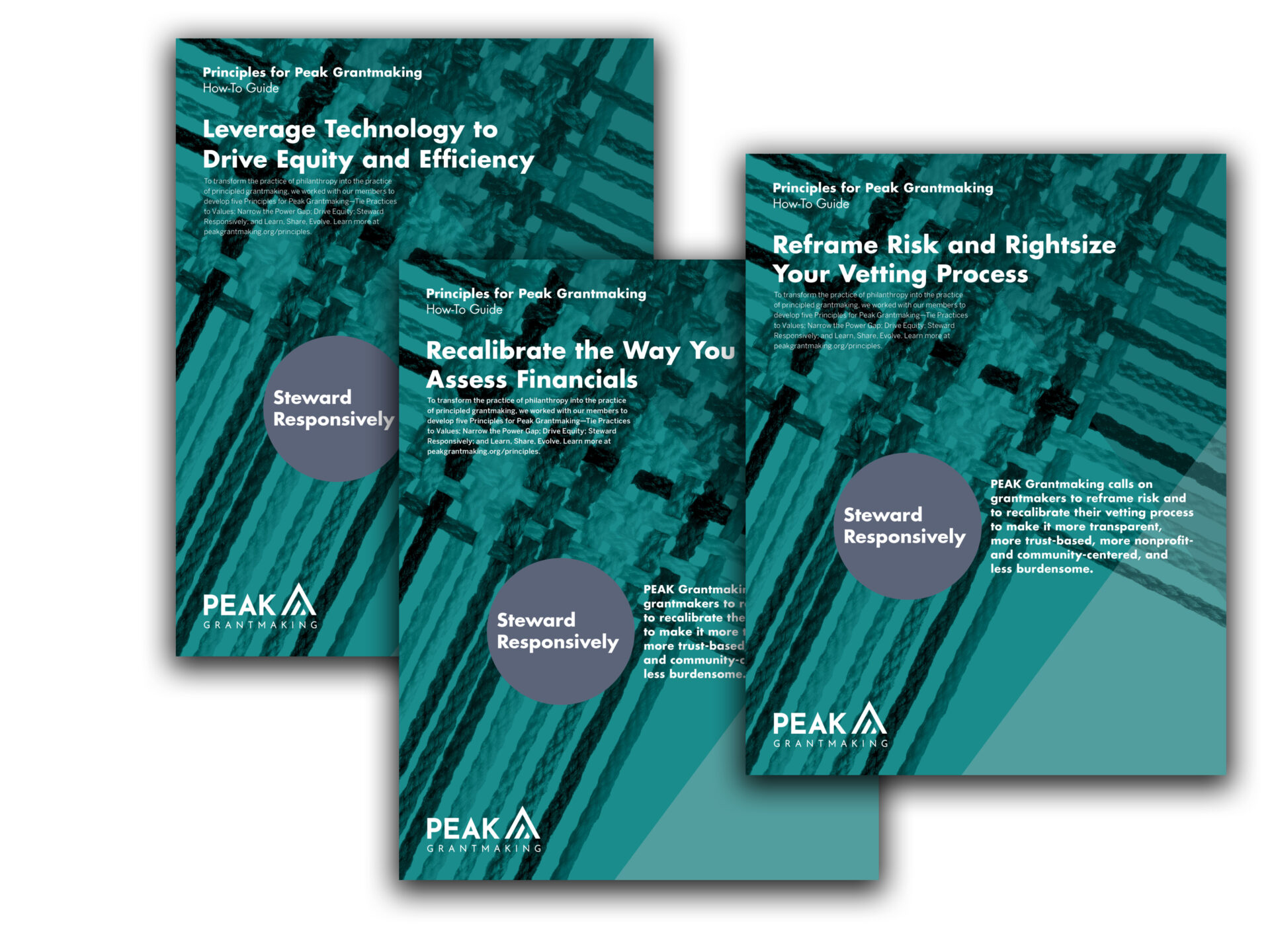Staying on Track in an Unpredictable World: Three ways to plan and manage future risks to impact

Over the last few decades, the world has gone from complicated to complex. We are more interconnected than ever, and this reality is playing out with stark visibility via COVID-19. As the complex and interdependent connections between us can be literally followed through the spread of the virus, the effects of COVID-19 are something quite different. In short, both the health and economic fallout that just begun to take hold is, simply put, the equivalent of a natural disaster. But, worse than a hurricane or earthquake, this disaster has just hit every single country in the world – simultaneously.
As responsible grant-makers, as implementers, and as a philanthropic community, we must reckon with the sobering fact that this new reality will continue to ripple through our lives. But how should we act (and react) when the only certainty is uncertainty? The simple answer is this: prepare for it. Remember that impact is a journey, rather than a destination. There will be obstacles and unexpected roadblocks to weather along the way – and this reality was true even before the coronavirus outbreak.
Now, more than ever, grantmakers can support their grantees through policies designed to soften the blow of risks realized today, and build resilience for the uncertainty of tomorrow.
Since 2012, Open Road Alliance has been the only funder exclusively focused on “when the unexpected occurs.” We’ve spent the last eight years testing and refining our process and criteria for responding when risk is realized. In the midst of the COVID-19 storm, we understand that now, more than ever, grantmakers can support their grantees through policies designed to soften the blow of risks realized today, and build resilience for the uncertainty of tomorrow. But how to start?
To help soften the blow, first, figure out how to triage requests for emergency support quickly and efficiently: examining projected cash flows, prioritizing who is most in need and when, and figuring out what impact you’re willing to lose (or not). Second, at times of crisis, it’s important to lean into your unique organizational superpower: whether that’s the ability to move fast, be flexible, get creative, offer relevant technical assistance, connect your grantees to larger networks, or other target support that meets their needs. Third, be transparent. With so much fear and (mis)information, we owe it to our grantees to be open, honest, and direct about the challenges we face and what we are (and aren’t) willing to offer.
In addition to this emergency response, don’t forget to think about when we are finally on the other side of this acute crisis. Planning for tomorrow should still start today and the decisions we make over the next three months will have profound effects on our grantees’ ability to weather continued uncertainty over the next year. So, even as you put a majority of efforts into softening the blow, here are three common-sense ways to start building a plan to manage future risks to impact.
1. Make emergency funding standard practice.
No matter how carefully nonprofits prepare themselves for all contingencies, inevitably they confront unexpected challenges that are outside of their control. Yet it is nearly impossible for most nonprofits to get money to manage unanticipated disruptions – for the most part, foundations don’t have a way to provide emergency funds and only approve grants as part of their annual cycle. As a result, many ambitious, promising, multimillion-dollar efforts could stall or even fail due to the disruption caused by coronavirus. That’s why foundations should set money aside (either at the portfolio or project level) to cover unforeseen risks their grantees face.
They also need the policies and procedures in place to make urgent decisions in response to requests, and to communicate effectively with grantees. It’s important that everyone from the Board down is on board with how much flexible funding will be set aside for contingencies and how that policy will work in practice. In short, the emergency budget, policies, and protocols you are developing for COVID-19 should become standard policies moving ahead. Imagine how different our response today would be if we had these policies in place years ago?
2. Start a dialogue about risk.
As funders, we should open the door first when talking about risk. Setting aside funds for emergencies won’t have an impact if grantees don’t share with us when things go wrong. There is a trust and communication gap that gets in the way of having transparent and upfront conversations about risk and failure. If nonprofits are reluctant to ask for extra help, because they are afraid that such requests would compromise their ability to apply successfully for future grants, they may choose instead to scale back their ambitions in favor of being on time and on budget.
Impact suffers when we don’t talk about risk. In the face of prevailing uncertainty about the economic and social cost of COVID-19, it is incumbent on all of us as funders to provide an open collaborative environment in which to discuss project roadblocks and the need for additional funds.
3. Track data on risk and learn from it.
Like monitoring and evaluation, risk management is a continuous learning process that involves identifying, mitigating, planning for contingency, and then monitoring and reassessing risks as projects move forward. One way of doing this is to align M&E processes with the level of risk anticipated for each portfolio or project. This means continuing to engage grantees in conversations about risk throughout project implementation and tailoring the frequency of these exchanges to align with anticipated risk.
Where possible, we need systems in place to track these data and use them to inform investment decisions in future. While setting up a permanent system may be a post-crisis priority, we encourage you to document what your grantees are encountering now. The real-life examples of what they are facing and how they are responding will be a solid foundation for future planning.
There is no surefire way to ensure grantees can weather the storm of unexpected shocks and crises. But, as funders, we have the tools at our disposal to prepare for and help nonprofits overcome roadblocks. The current pandemic and its consequences are our new known reality, but the world’s unpredictability will remain. Now is the time for action that is resilient to the expected challenges ahead. It is time for grantmakers to both shore up our grantees today, and get prepared for whatever tomorrow might bring.



